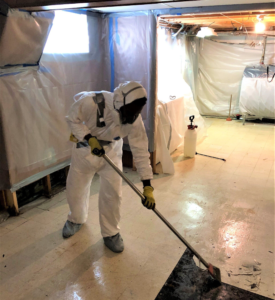Armadale Rubbish Collection should occur regularly on a schedule and it should be easy for people to get their trash bins out on time. Ideally, residents should use plastic trash bags rather than metal cans as they are quieter and easier to lift for sanitation workers.
Some cities charge a flat fee for rubbish collection (usually collected through building water bills) and create financial incentives to produce less waste. Others charge based on the volume of refuse set out for pickup.

The word rubbish is generally understood to mean anything that is unwanted or unusable. It can also be a slang term for nonsense, as in “that speech is complete rubbish.” However, it can also be used figuratively to refer to something that is not true or accurate. For example, the claim that the earth is flat is utter rubbish.
In general, rubbish includes combustible waste like paper, boxes, glass and crockery, metal scrap and tin cans and non-combustible waste like wood and greenery. It can also include hazardous materials, such as asbestos and chemicals, that require special handling and disposal.
Rubbish collectors are a vital part of our waste management system. They work hard to maintain a clean environment by collecting waste regularly from households, businesses and public spaces. They follow carefully planned routes to ensure no area is overlooked. Their commitment to maintaining a clean and hygienic community is inspiring.
It is important to keep rubbish bins free from overflowing waste, as this can cause environmental and health issues. It is also important to separate rubbish into different categories, so that recyclable and non-recyclable items can be separated. Recycling helps to reduce the amount of rubbish that ends up in landfills and conserves natural resources.
If we recycle as much as possible, we can greatly reduce the amount of rubbish that is collected and disposed of each year. Educating our communities on the importance of waste separation and recycling can help to encourage sustainable practices.
Once rubbish is collected, it is transported to a sorting facility where it is segregated into different categories. Recyclables are sent for processing, while non-recyclables are disposed of responsibly in landfills. It is important to recycle as much as possible, so that we can minimize the impact on our planet’s ecosystems.
A good way to support the rubbish collectors in our community is to show them our appreciation. Simple acts of gratitude, such as leaving a thank-you note or smiling at them, can go a long way in showing that we value their hard work.
Although the terms trash can, garbage can and rubbish bin may be used interchangeably, they actually differ slightly. Trash cans and garbage cans are primarily found in East Coast America, rubbish bins are more often found in Britain, and waste bins are commonly used in many other parts of the world.
The rubbish bin, also referred to as the black bin or general waste bin, is used for any items that don’t fit in your recycling bins, food waste bin and glass crate. This includes any paper and plastic without a logo or with the word ‘recyclable’ on, any tins, cans or glass that don’t have a lid, and any other non-recyclable items such as sanitary products, foil, batteries, old tyres, tea bags and coffee grounds.
Putting the wrong things in your bins can increase the cost of waste disposal and hurt the environment. This is why it’s so important to understand which bin your waste belongs in and always check before you put something out for collection.
We’ve compiled a handy A to Z list of what can and cannot go in your different bins. This will help you make sure you’re Bin It Right every time, and reduce the amount of waste you throw away.
When it comes to your Blue Bin, it’s worth mentioning that it doesn’t take much to contaminate a batch of recycling, and this is costing the City millions of pounds annually! To avoid this, please ensure that your recycling is fully rinsed and empty before placing it in your blue bin.
If you’re concerned that you don’t have enough space in your kitchen to store a rubbish bin, why not think about putting one outside the back of your house or apartment? Or maybe even in the bathroom! This will ensure that you’re never far from a bin to dispose of your rubbish, and you won’t end up with trash sitting around the place. This is better for the environment than throwing it out with your general waste bin.
The rubbish is collected from homes and businesses by councils or private waste collection companies. The rubbish is transported to waste treatment facilities, which can be landfill sites or incineration plants. Non-recyclable waste is disposed of in landfill, while recyclable waste is sorted and sent to recycling centers.
The amount of rubbish produced in the world is staggering, and it’s the responsibility of local councils and waste management companies to make sure that it’s disposed of in a responsible manner. Each country has its own laws and regulations concerning rubbish, so it’s important to know the rules in your area.
Rubbish is usually collected once or twice a week, depending on the area. In hot climates, rubbish may need to be collected more frequently in order to prevent fly breeding and odours. However, it’s also important to have enough space in the rubbish bins for each type of waste, as overfilling them can cause a blockage and delay the collection of other types of waste.
In some areas, communal rubbish bins are provided for residents to use. These are often located in public spaces, such as streets or parks. Individual households should place their rubbish in the designated bins each week to avoid blockages or delays. Ideally, waste should be placed out the morning of the collection day so that it can be easily collected by the refuse collectors.
Many cities use large receptacles on the sidewalk to collect household trash and recycling. Some even have pneumatic tubes that whisk waste away, a system that’s being tested at Roosevelt Island and Hudson Yards.
They have recently changed the time when garbage and recycling can be set out for pickup. The change means that residents have two hours longer to put out their trash, which could help reduce the number of rats in the city. In addition, residential buildings with nine or more units can now opt in to a 4 p.m. to 7 a.m. set-out window for garbage, recycling, and organics, as well as bundling their cardboard to make it easier to carry away.
In the vast majority of places, rubbish is collected by a private entity on behalf of local governments or municipalities. Residents pay for trash collection in the form of tags or taxes, and the entity processes the waste it collects to ensure that recyclable materials are separated from non-recyclables, and that a majority of the waste is sent away from local landfills.
Trash is usually taken to a waste transfer station, which is basically the first stop on the road to the landfill. Here, the garbage is meticulously sorted by workers or sophisticated machines. The goal is to separate out organic material, paper, plastic and metals for further processing or disposal. The items are also washed to remove contaminants such as ink, glue and the odd staple. They are then rolled into sheets ready for the next step.
A lot of people don’t think about where their garbage goes after it leaves their doorstep, but it does have a long journey to its final destination. Americans generate an average of 4.9 pounds of trash per person each day, which adds up to 292.4 million tons of solid waste a year. That’s 12 percent of the world’s trash, despite making up only 4 percent of the global population [source: EPA].
The majority of our rubbish ends up in landfills, and most of them are in states or countries other than where the waste originated. This is a shame because recycling, incineration and composting are all infinitely preferable to landfills, which create noxious gases and take up valuable space.
When trash reaches the landfill, it is covered in a layer of compacted soil to seal out air. The bacteria in the rubbish then break down the organic matter, producing methane and carbon dioxide as byproducts. Methane is a potent greenhouse gas, 28 to 36 times more effective than carbon dioxide at trapping heat in the atmosphere, so methane emissions are a big problem for landfills.
The landfill is also surrounded by a series of perforated pipes that drain out the leachate, which is water with contaminants, into a pond or other sewage treatment facility. Some of this is used to water the plants that cover the rubbish, and the rest is sent back to the site to reuse or for new construction.



